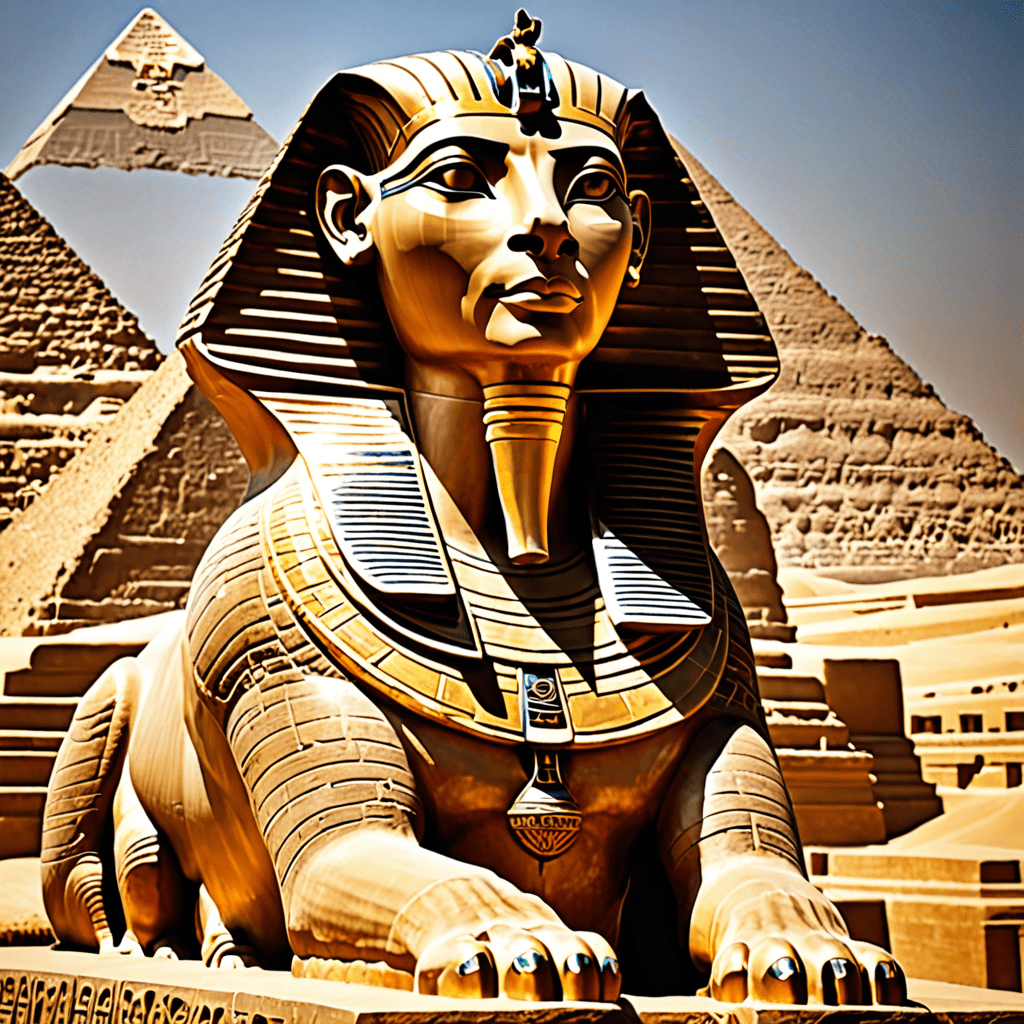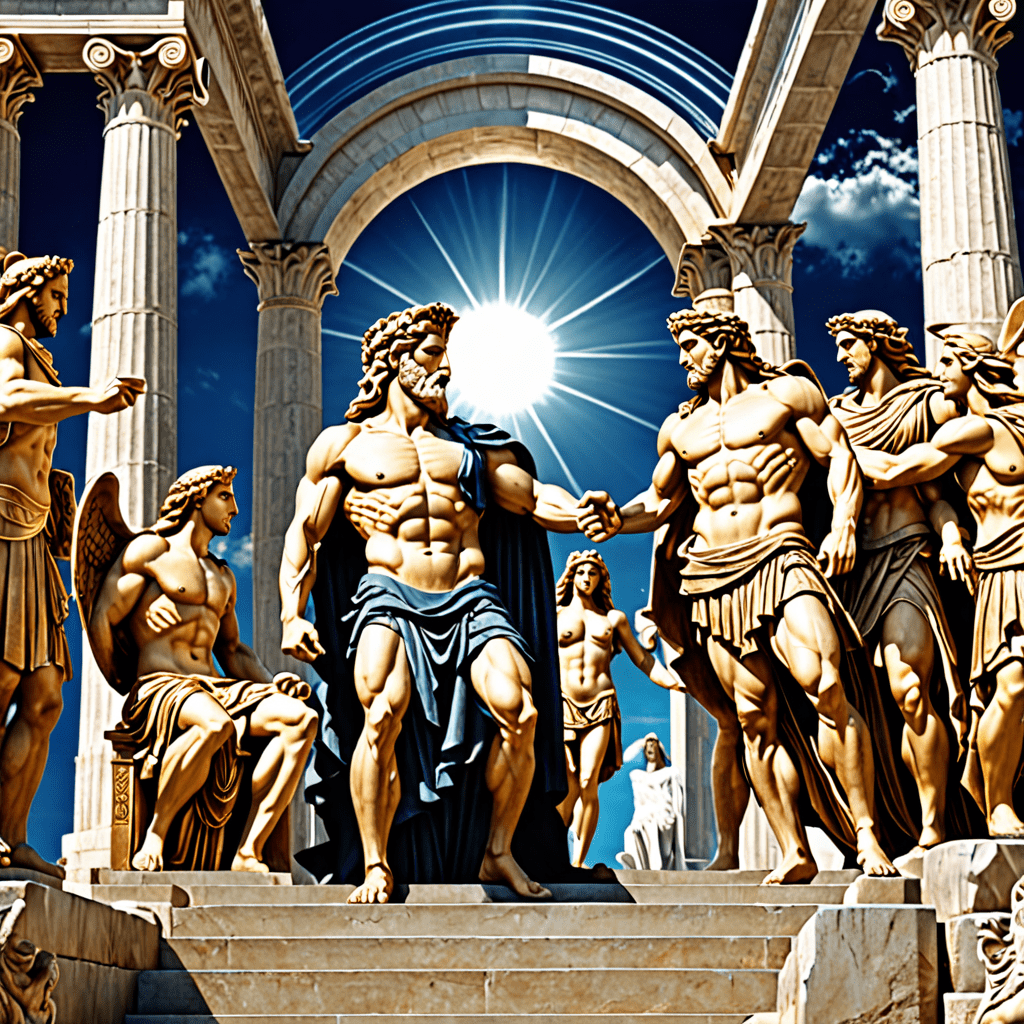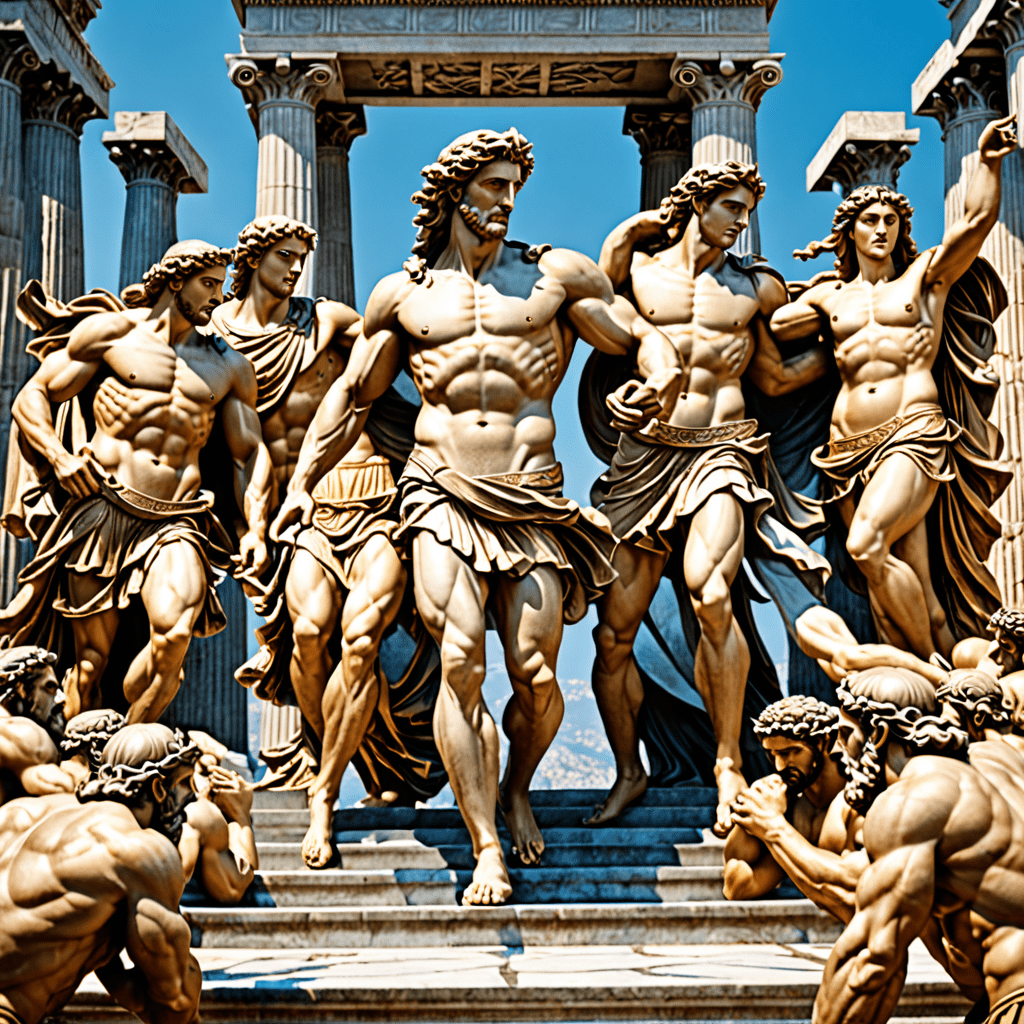The Enigmatic Sphinx in Egyptian Mythology
Introduction to the Sphinx
In Egyptian mythology, the Sphinx is a creature with the body of a lion and the head of a human, often believed to embody the Pharaoh’s grandeur and power. It stands as a majestic symbol of protection and guardianship at key ancient sites, especially near pyramids.
Symbolism and Significance
The Sphinx symbolizes strength, intelligence, and wisdom in Egyptian culture. With its gaze fixed on the eastern horizon, it represents the rising sun and the cycle of life, death, and rebirth. The Sphinx’s role as a guardian is reflected in its key placement at the Giza plateau, overlooking the pyramids of Khufu, Khafre, and Menkaure.
Legendary Riddles of the Sphinx
One of the most famous tales about the Sphinx involves a riddle posed to all travelers who sought passage through its domain. The enigmatic question asked by the Sphinx was, “What walks on four legs in the morning, two legs at noon, and three legs in the evening?” Those who failed to answer correctly were devoured by the powerful creature. Oedipus, a Greek hero, successfully answered the riddle, stating that the creature was humankind—crawling as a baby, walking upright in adulthood, and using a cane in old age.
The Great Sphinx of Giza
The Great Sphinx of Giza is arguably the most famous Sphinx in Egypt, situated on the western bank of the Nile River near Cairo. Believed to have been constructed during the reign of Pharaoh Khafre around 2500 BC, the monument stands at an impressive 66 feet tall and nearly 240 feet long. Carved from a single piece of limestone, this colossal statue continues to intrigue archaeologists, historians, and visitors alike with its mysterious aura and intriguing symbolism.
Unraveling the secrets of the Sphinx allows us to delve deeper into the rich tapestry of Egyptian mythology and uncover the profound symbolism encapsulated in this mystical creature. Its enigmatic presence continues to captivate individuals from around the world, inviting us to explore the ancient mysteries of the land of the pharaohs.
FAQ About the Enigmatic Sphinx in Egyptian Mythology
What is the significance of the Sphinx in Egyptian mythology?
The Sphinx represents strength, wisdom, and guardianship in Egyptian mythology. It is often depicted as a creature with the body of a lion and the head of a human or a god.
What role did the Sphinx play in ancient Egypt?
The Sphinx was believed to be a guardian figure, protecting sacred places such as temples and tombs. It was also associated with the sun god Ra and the pharaoh’s divine power.
What is the most famous Sphinx in Egypt?
The Great Sphinx of Giza is the most renowned Sphinx in Egypt. It is located near the pyramids at Giza and is one of the oldest and largest monolithic statues in the world.
What mysteries surround the Great Sphinx of Giza?
There are various theories regarding the age, purpose, and symbolic meaning of the Great Sphinx, including connections to ancient civilizations, astronomy, and hidden chambers beneath the statue.
Is the Sphinx still a symbol of Egypt today?
Yes, the Sphinx remains an iconic symbol of Egypt and is a significant historical and cultural landmark visited by tourists from around the world. Its enigmatic presence continues to intrigue and fascinate all who behold it.



